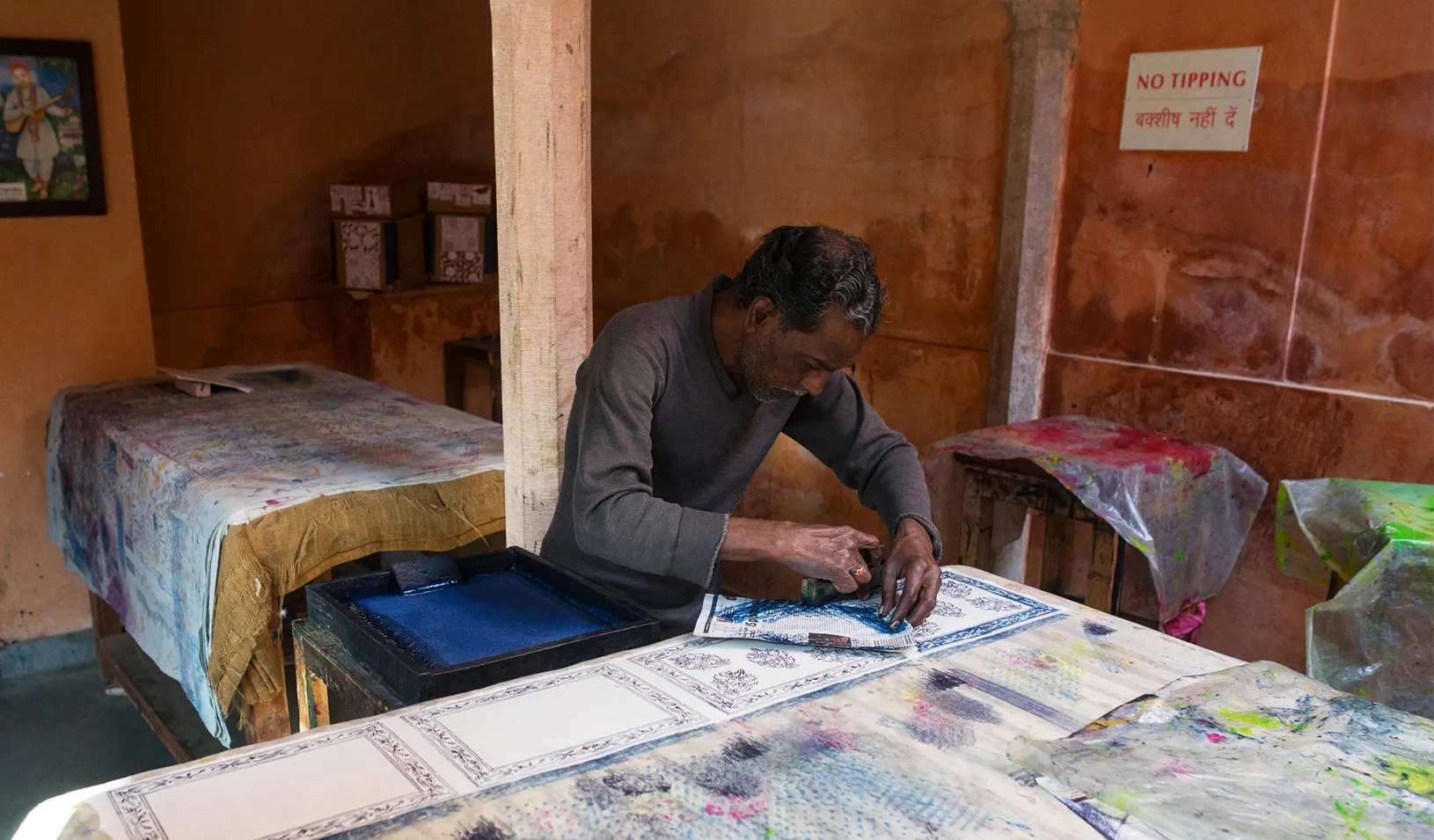A Nonprofit Group Helps Struggling Indian Craftspeople
Innovation fellow creates an artisan’s business-to-business matching platform.
July 21, 2015

Craftspeople are the mainstay of India’s non-farming, rural economy. | Courtesy TOTO Express
There are roughly 200 million people in India who depend on handicrafts for their livelihoods. These craftspeople are the mainstay of India’s non-farming, rural economy, but for the most part they are an informal working group often struggling to make ends meet. As such, more than a third of them have left the occupation in the past 30 years, according to the Indian philanthropy foundation Dasra.
The Problem
One of the reasons rural artisans struggle to make a living is that communication and exchange between rural and urban India are undeveloped: Roads are poorly maintained, many villages don’t have electricity, and most villagers don’t have banking. As a result, the artisans don’t see a broader market for their handicrafts beyond their immediate region. About 90% of artisans who responded to a survey conducted in West Bengal and Rajasthan said lack of income was responsible for their poor life quality. One of them, Kaylan, lamented that his skills in carving woodblocks can’t support his family and so his craft will die with him.
The Novel Idea
Gary Mao’s nonprofit organization TOTO Express provides a business-to-business matchmaking platform and education services to help rural artisans in India continue to use their handicrafts to improve their livelihoods.

Gary Mao is a 2015 Social Innovation Fellow. | Courtesy TOTO Express
It differs from the hundreds of other ventures that are trying to help artisans in India because it focuses on the licensing of the art, as opposed to selling an actual painting, for example.
“We had the realization that the thing that might be the most valuable is actually the design itself,” Mao says. “This takes out the costly manufacturing and shipping component.” With this business model, TOTO Express has been able to return roughly 50% of sales profits back to the artist, compared to the standard 5%.
In its pilot project, TOTO Express helped artisans develop a digital portfolio of their designs that spurred a collaboration with a high-end stationery manufacturer. The collaboration took Phad art created by Rajasthani artists in northwest India and created a line of premium notebooks. The notebooks are projected to reach $40,000 in sales, enough to nearly triple the yearly income of the artists involved and used just four pieces of art that would otherwise be sold for $100 total.
TOTO plans to links buyers and rural artisans through a website or mobile app that showcases their work. The goal is to have at least 10,000 groups on the platform by 2020, Mao says.
The Innovator
Growing up in Missouri, Mao changed homes frequently as a young child after his parents returned to China. Even though Mao was separated from his parents, they wrote to him constantly, their letters stressing the importance of education and emphasizing their love of California.
Mao seemed to take the sentiments to heart, attending the University of California at Berkeley before attending Stanford Graduate School of Business. Mao’s time in 2014 touring rural Indian villages to teach kids science, technology, engineering, and math out of a classroom-in-a-bus inspired TOTO Express. When he sought an answer for why the students stopped showing up to the bus, he learned that behind their truancy was poverty. From there it was easy to connect their unstable income to their handicraft work.
Mao sees his work with rural artisans as a way to combine his appreciation for art (he plays keyboard and is a spoken-word poet) with his determination to help alleviate poverty. During his years separated from his parents, times were difficult for Mao and sometimes he didn’t have consistent access to food or health care.
TOTO Express borrows its name from a Japanese folktale called Toto, about a girl from an impoverished family. The character goes off on a magical journey and, in the process, discovers that her artistic talents will allow her to turn around her family’s misfortune. “The story arc of Toto,” Mao says, “is about the power of art and how it can turn around a tough situation.”
Gary Mao received his MBA from Stanford GSB in 2015. He is a 2015 Social Innovation Fellow. The fellowship provides up to $150,000 in funding, advising, and support to graduating Stanford GSB students who want to start a nonprofit venture to address a pressing social or environmental need during the year after graduation.
For media inquiries, visit the Newsroom.
Explore More

Short Takes: Where Science Meets Culture

Unleashing the Power of Market Creation



